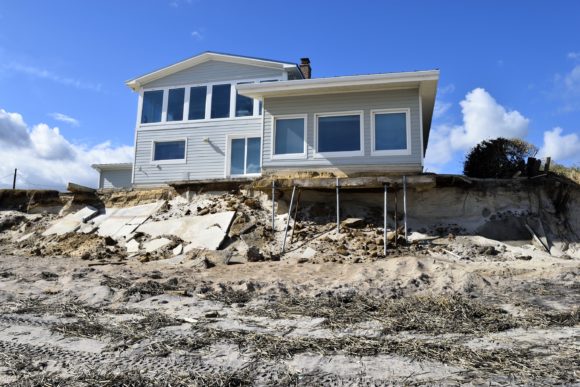The Atlantic hurricane season, which began June 1, puts 7.3 million homes at risk with an estimated reconstruction cost of $1.8 trillion, CoreLogic said in its 2019 Storm Surge Report.
That’s 300,000 more homes and $200 billion more in reconstruction costs since last year’s report. This is the first year the report analysis includes multi-family structures, such as apartments and condominiums. Multi-family structures added 246,000 homes and $92 billion in potential losses to the scope of the report.
CoreLogic, a data analytics provider based in Irvine, Calif., examined potential losses along a 3,700-mile coastline encompassing 19 states from Texas to Maine. The West Coast and Hawaii were not included in the report because they are less susceptible to storm damage.
Florida stands out as the most vulnerable state, with more than three times more homes at risk (2,913,886) than second-ranked Louisiana (827,032). Florida also stands out in terms of potential damage, with at-risk structures having an estimated reconstruction cost of $604 billion — a third of the total for all 19 Gulf Coast and Atlantic Coast states.
Narrowing down to metropolitan areas, Miami, New York City, Tampa, New Orleans and Virginia Beach, Virginia hold the greatest risks. In the New York City metro area, which includes Philadelphia and much of New Jersey, 831,000 homes with estimated replacement costs of $330 billion stand in harm’s way. In the Miami metropolitan area, which includes West Palm Beach and Fort Lauderdale, 827,000 homes are at risk with an estimated replacement cost of $166 billion.
CoreLogic said 67.5% of the total number of homes at risk from storm surge, and 68.9% of replacement costs are located in 15 metropolitan areas.
“This reinforces the idea that the location of future storms will be integral to understanding the potential for catastrophic damage,” CoreLogic said. “A low-intensity storm in a densely populated, residential urban area can do significantly more damage than a higher-intensity hurricane along a sparsely inhabited coastline.”
To illustrate, CoreLogic examined the disparate damages caused by Hurricane Florence, which made landfall as a Category 1 storm in North Carolina, and Hurricane Micheal, which hit the Florida panhandle as a Category 5 storm.
CoreLogic said while Florence’s maximum recorded wind gusts were 105 mph, the storm moved slowly and tropical storm winds encompassed a wide area. About 700,000 residential and commercial properties experienced catastrophic flooding and modest wind damage. Insured flood losses, both storm surge and inland, were estimated at $5 billion to $9 billion.
In contrast, Hurricane Michael was a compact, fast-moving hurricane. While its windspeed exceeded 150 mph, the hurricane caused insured storm surge losses of less than $300 million, CoreLogic said.
On average, 12.1 named storms form each year, with 6.4 of those reaching hurricane status, according to the report. In 2018, there were15 named storms with eight reaching hurricane status.
Predictions vary on how many named storms will form in 2019. The National Oceanic and Atmospheric Administration predicted slightly below to slightly above average: nine to 15 named storms, with four to eight reaching hurricane strength. North Carolina State University, on the other hand, predicted five to seven hurricanes and 13 to 16 named storms, according to CoreLogic.
“Regardless of the forecasted number of hurricanes, it is important to note that a strong hurricane that occurs in a less densely-populated area – or even a small storm that tracks through a densely-populated area – could generate catastrophic storm surge. When evaluating potential damage, the number of storms or degree of intensity is not as significant as a storm’s path,” CoreLogic said.
The 2019 hurricane season ends Nov. 30.
Topics Catastrophe Natural Disasters Florida Windstorm Hurricane Homeowners
Was this article valuable?
Here are more articles you may enjoy.



 10 Highest Class-Action Settlements in 2025 Eclipsed $70B Total: Duane Morris
10 Highest Class-Action Settlements in 2025 Eclipsed $70B Total: Duane Morris  Billionaire NFL Owner Suing Over Billboards Near His LA Stadium
Billionaire NFL Owner Suing Over Billboards Near His LA Stadium  Consumer Acceptance of Telematics Widens, Says Survey
Consumer Acceptance of Telematics Widens, Says Survey  Court Orders Justice Family Coal Companies to Pay $1M to Liberty Mutual Unit
Court Orders Justice Family Coal Companies to Pay $1M to Liberty Mutual Unit 

